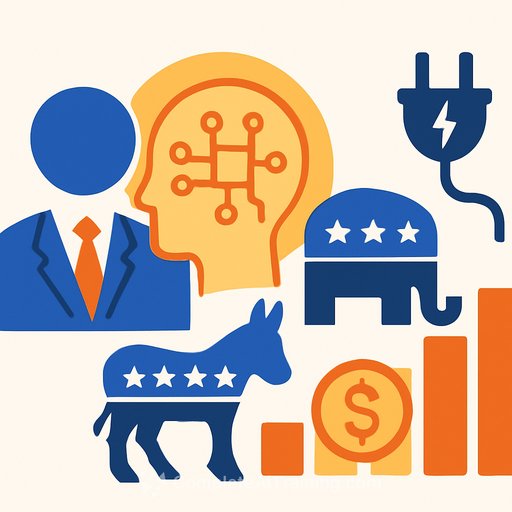AI-made video of Sen. Schumer shared by Senate GOP committee: Why this matters for public servants
A Senate GOP campaign arm circulated an AI-generated video portraying Sen. Chuck Schumer celebrating a government shutdown. Synthetic political media is no longer fringe. It's sitting in the daily news cycle and shaping perceptions in minutes.
For public servants, this is a signal. You need clear playbooks for identifying, responding to, and preventing the spread of deceptive AI content that could erode trust or disrupt operations.
Key risks for agencies
- Misinformation can misstate your agency's position, actions, or readiness during a funding lapse or crisis.
- Fabricated audio or video can impersonate leaders, confuse staff, or trigger media cycles before facts are verified.
- Internal confusion rises if there's no single source of truth or escalation path.
Immediate actions to take
- Stand up a rapid-response cell across comms, legal, and security to triage suspected synthetic content within hours.
- Publish a "source of truth" page with official statements, timestamps, and asset archives; pin it on your primary channels.
- Set monitoring on major platforms and keywords tied to your leaders and programs; include after-hours coverage during shutdown threats.
- Require staff to route media inquiries about suspected fabricated content through a single point of contact.
- Pre-authorize a short holding statement for fast release (see template below).
Detection and verification
- Use at least two methods: platform-provided indicators, internal media forensics, and corroboration with original sources.
- Adopt content authenticity measures (e.g., C2PA-style provenance) for your official media where feasible.
- Assume detection is imperfect. Prioritize verification and clear public guidance over technical claims alone.
Policy and compliance checkpoints
- Clarify separation of official duties and political activity (e.g., Hatch Act constraints for federal staff).
- Document internal rules for using or engaging with AI-generated media in official communications.
- Track election deepfake rules in your state and coordinate with counsel before responding around election periods. See legislative summaries from the National Conference of State Legislatures.
- Align your risk controls with recognized guidance like the NIST AI Risk Management Framework.
Prepared statement template
"We are aware of a fabricated piece of media circulating online that misrepresents [agency/official]. For accurate and current information, refer to our official channels and the updates posted at [link to source-of-truth page]. We will provide further details as they are verified."
Operational checklist for your team
- Owner: Name one accountable lead for synthetic-media incidents.
- Escalation: Define thresholds for legal review, leadership briefings, and interagency coordination.
- Records: Log incidents, decisions, timestamps, and evidence for oversight and lessons learned.
- Training: Run quarterly tabletop exercises that include AI-generated misinformation scenarios.
- Vendors: Pre-clear tools and workflows for media analysis to avoid delays during incidents.
Why this case is a wake-up call
High-profile synthetic clips move fast and blur lines between commentary, satire, and deception. Your job is to protect public confidence and keep essential services steady. That requires speed, clarity, and a repeatable process-before the next clip drops.
Level up your team's AI literacy
- Build role-based skills for comms, legal, and IT so responses are consistent and defensible. Explore practical learning paths by role at Complete AI Training.
Set the process now, test it often, and communicate with precision. Trust depends on it.
Your membership also unlocks:






